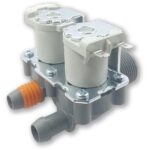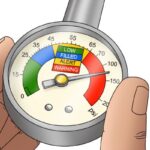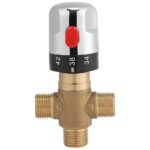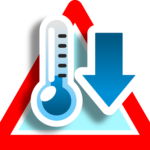Solar water heaters and washing machines
As shown by the electricity consumption graph of a washing machine, most of the consumption takes place during the initial phase and when the cold water is heated based on the selected wash program (40 degrees in the example). Then there is consumption from turning the tub which is very small and increases momentarily during rinsing – spinning but is much lower requirement compared to water heating. Note that the electrical resistance of washing machines is 2000 watts (2kw). According to the energy star standard, a new device that follows the standard requires on average about 20 liters of water during the energy-intensive phase.
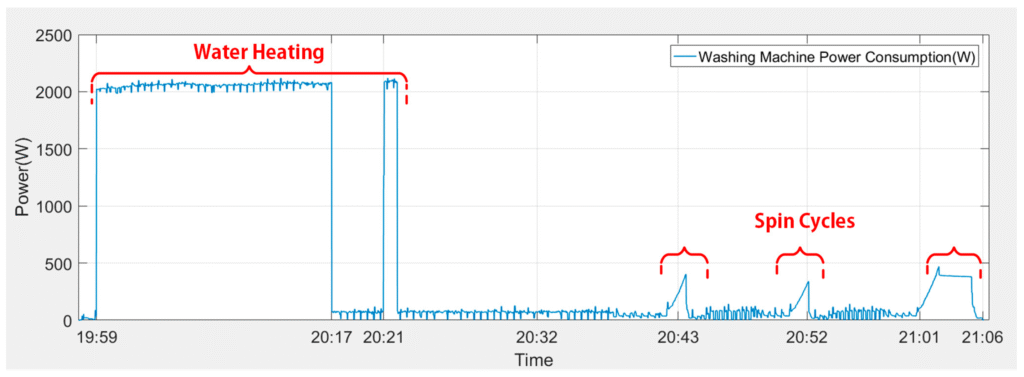
The solar water heater in winter
Very many households during winter “deactivate” the solar water heater with the reasoning that water is heated by the central heating system (boiler) so there’s no need for someone to deal with the “unstable” in winter solar water heater. Many are the days during the year when the solar water heater cannot provide us with about 38 degrees which is the average acceptable temperature for human bathing. Very few are those when it cannot provide us with water at 21 degrees, ideal temperature for providing water to the washing machine through a thermostatic valve. Even if it’s lower, e.g. 15 degrees compared to the network’s 5, there is benefit.
The temperature of network water in Greece

According to the data, the average temperature of network water in climate zone D is 5-7 degrees Celsius during winter and early spring, while in other climate zones it doesn’t exceed 12. Taking into account these real data, we will examine two cases of water heating by the washing machine during the “cold” months of the year. For a specific wash program at 40 degrees we will calculate the energy required by the washing machine to heat about 20 liters of water. We will also examine this scenario for a final program temperature of 30 degrees and reach some conclusions.
- Using water from the network directly at 6 degrees
- Using water from thermostatic valve at 21 degrees (water that a solar heater can give us almost all year in any climate zone)
Amount of energy required for water heating
Example 1
Water quantity 20 liters, program temperature 30 degrees Celsius from 6 degrees directly from the network and from 21 degrees through thermostatic valve.
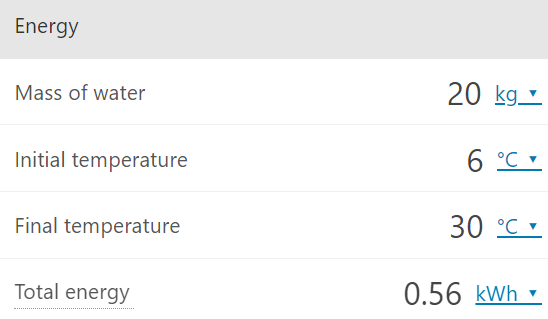
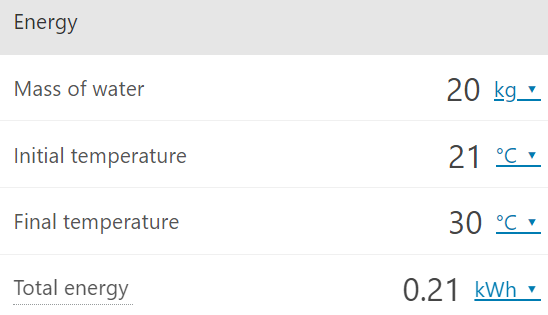
As shown by the above data, energy savings are very significant. It will require 0.56kwh from the washing machine resistance while with “lukewarm” water supply from the solar water heater 0.21kwh. The difference and savings in the 30-degree program is very significant and over 60%. We avoid presenting values in € as this is a very variable parameter, especially with the situation that has developed in energy in Europe and our country. Each reader can make calculations according to the program-contract they have signed with their supplier.
Example 2
Water quantity 20 liters, program temperature 40 degrees Celsius from 6 degrees directly from the network and from 21 degrees through thermostatic valve.
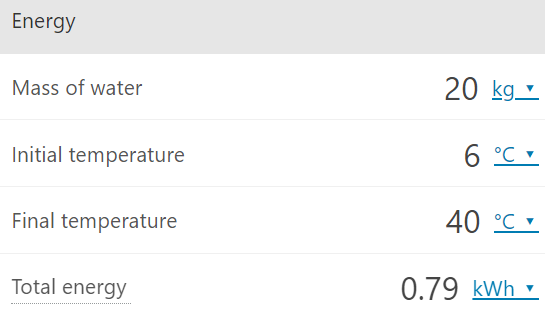
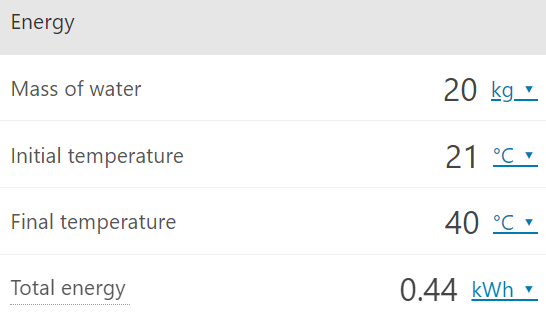
In the case of 40 degrees, significant savings also result. From 0.79kwh it will require 0.44kwh if we supply water from the solar water heater through thermostatic valve. This means over 40% savings.
Generally, the calculation for the required energy needed to heat a quantity of water from initial temperature to final temperature uses the following formula as an example:
20 liters * (40°C – 6°C) * 4.18 J/g°C = 2842j
* The 2842 joules are equivalent to 0.79kwh and because it’s easier for the reader to understand energy as kilowatt-hours rather than joules, this unit is used. Besides, in electricity bills charging is done with kilowatt-hours (kwh).
Very cold water and white stains on clothes

Another advantage of using water from a thermostatic valve is the fact that during winter it’s very likely that water with temperature lower than 15 degrees Celsius will end up directly in the washing machine. At low temperatures, detergent has considerable difficulty dissolving properly. This has consequences, washing doesn’t have the expected result while clothes may end up with light-colored stains (especially on dark fabrics) which are nothing more than detergent residues that didn’t dissolve during the initial phase and got trapped between folds. Water supply from a thermostatic valve helps address this problem.
Ecological approach
Energy savings doesn’t only mean money savings, in a period of energy insufficiency it means much more. It’s a skill to be able to accomplish the same task using less energy and without undermining quality. In 2022 the world entered a situation where energy became very expensive while in some cases opinions and predictions were expressed for Europe that there would be an energy blackout. Of course, no one wishes for this.
The content of the article and the concerns examined concern more those who live off-grid in houses and installations that produce the energy they need themselves. These people have already dealt with and probably found the ideal middle ground in their energy requirements. With the situation that developed in 2022 in Europe due to the Ukrainian issue, and the energy supply prices shaped by the energy exchange, it’s an opportunity for all of us to think more in terms of energy savings and not just euros.
- Improvements in the Placement of the Data Logger - 29 January 2025
- Solar Water Heater Statistics – December 2024 - 10 January 2025
- Washing machines with dual water supply - 24 December 2024






